You've probably heard how ChatGPT is useful, but then, after using it, you're not seeing the results you hoped for?
If you suspect that poorly crafted prompts might be the problem, you're in the right place!
This article is here to help as we created a list of 9 tips on how to write better prompts for ChatGPT!
Let’s dive in!
Writing Prompts for ChatGPT: Common Mistakes ❌
Some of the main mistakes people make when writing prompts for ChatGPT are:
❌lack of precision
❌absence of context
❌missing introduction prompts
❌lack of descriptive instructions
The problem with these mistakes is they lead you to generic answers, and ChatGPT can give you much more if you know how to use it.
I'm sure that these are some errors that all people make when they start using some AI tool, and to learn that, you must practice and experiment with various techniques,
Remember:
⏩Prompts must be clear and precise.
⏩Setting the stage with an opening prompt helps it understand the topic right away.
⏩Explicit details and examples help ChatGPT in creating better results.
9 Tips To Write Better Prompts for ChatGPT ✅
Here are 9 tips on how to create better prompts!
1. Provide Context
Context is important when crafting a prompt for ChatGPT because it allows the tool to better grasp your query and deliver a more relevant response.
Without context, the tool may be unable to understand your needs, resulting in unclear or generic output.
So, when you're giving ChatGPT a task, be sure to explain what you're doing and provide some background information about it.
💡Example of how to provide the context when writing a prompt:
“I'm writing a science fiction short story set in a dystopian future where humans live on Mars.
I need help developing the world-building aspects, such as the social structure, technology, and daily life challenges.
Can you provide creative ideas and details to make the setting feel immersive and believable?”
Why is this prompt good?
✅Because it provides a clear purpose and the intention to seek help in constructing a science fiction short tale. It also mentions what is the focus of the story.
This context enables ChatGPT to understand the user's exact requirements.
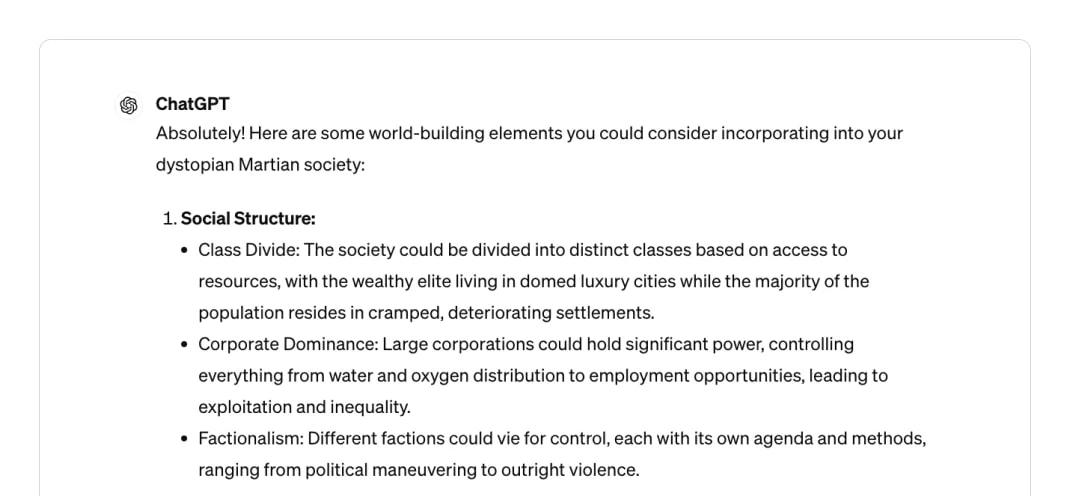
✅The prompt thoroughly discusses the story's setting and topic, focusing on key elements such as the dystopian future, human colonization of Mars, and the specific aspects of world-building that require assistance.
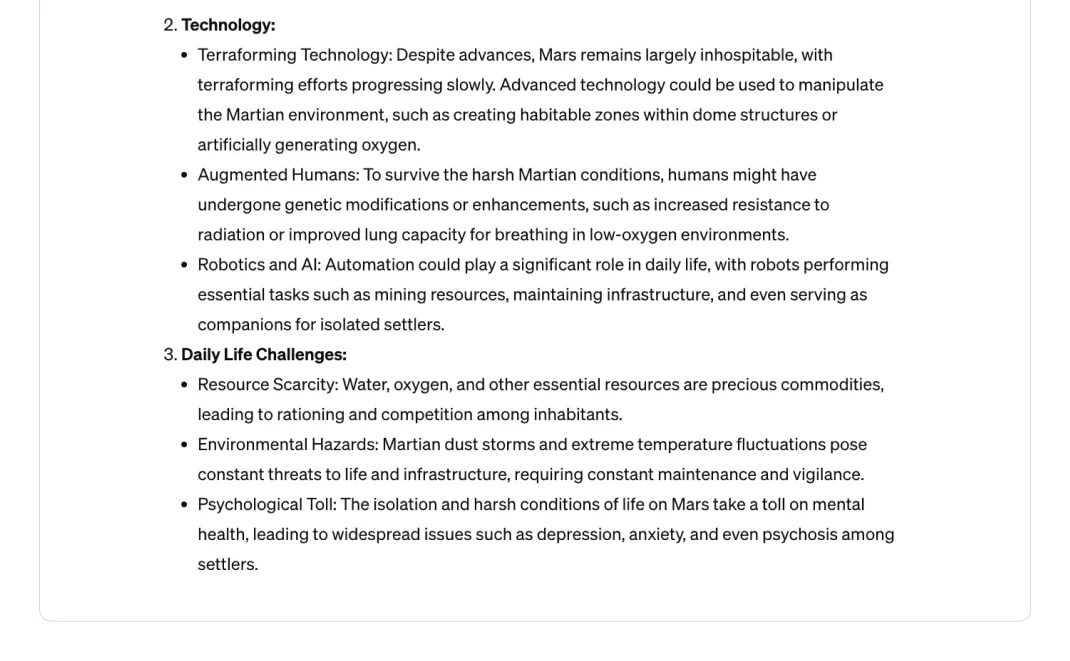
2. Give an Example
When you give ChatGPT an example, it has something to “follow” while creating a response. That way you make it easier for yourself because you don't have to describe too much what kind of answer you want.
Instead, the tool will have that information from the provided sample.
💡Example of how to provide a guide when writing a prompt:
“Text Example: "On the tranquil shores of Lake Serenity, nestled between towering pine trees and rolling hills, lies the quaint village of Willowbrook.
Here, time seems to slow down, and the air is filled with the sweet scent of wildflowers.’’
Take inspiration from this text to craft a vivid description of the setting for a cozy mystery novel set in Willowbrook village.
Capture the idyllic beauty of the surroundings while hinting at the mysteries lurking beneath the surface."
Why is this prompt good?
✅Because ChatGPT has a clear guide in which tone to write and what to focus on.
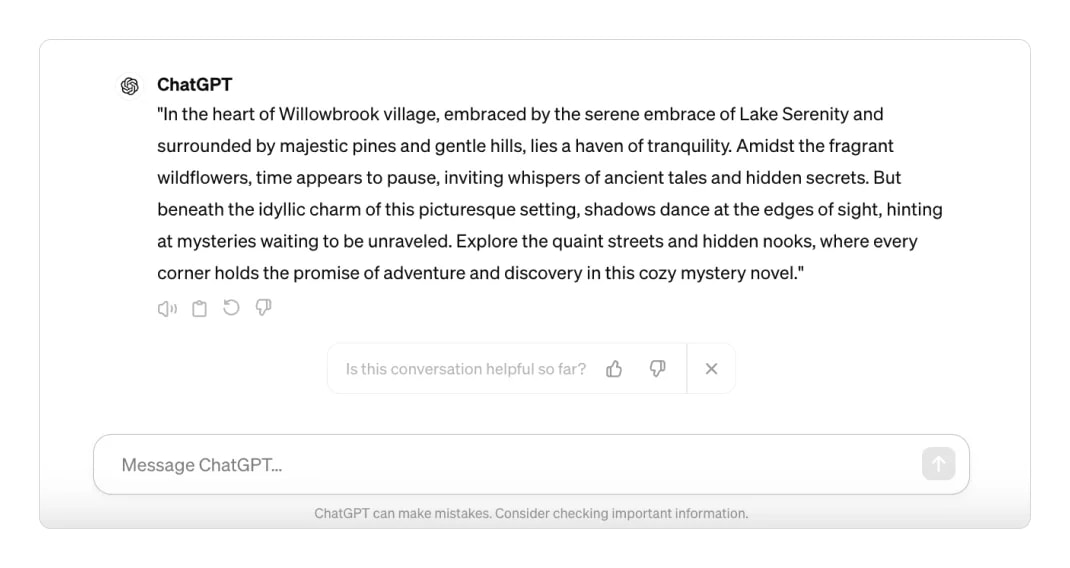
3. Define the Desired Format
If you like shorter paragraphs and bullet points, simply state that in the instructions and you will get the answer in the desired format.
That way, you won't have to manually add formats in the text and ChatGPT will know exactly how to generate text.
💡Example of how to define the format:
“Write a brief overview of the benefits of mindfulness meditation, organizing your response into short paragraphs and bullet points. Highlight its effects on mental health, stress reduction, and overall well-being.”
Why is this prompt good?
✅The prompt clearly describes the task, requiring ChatGPT to provide a brief overview of the benefits.
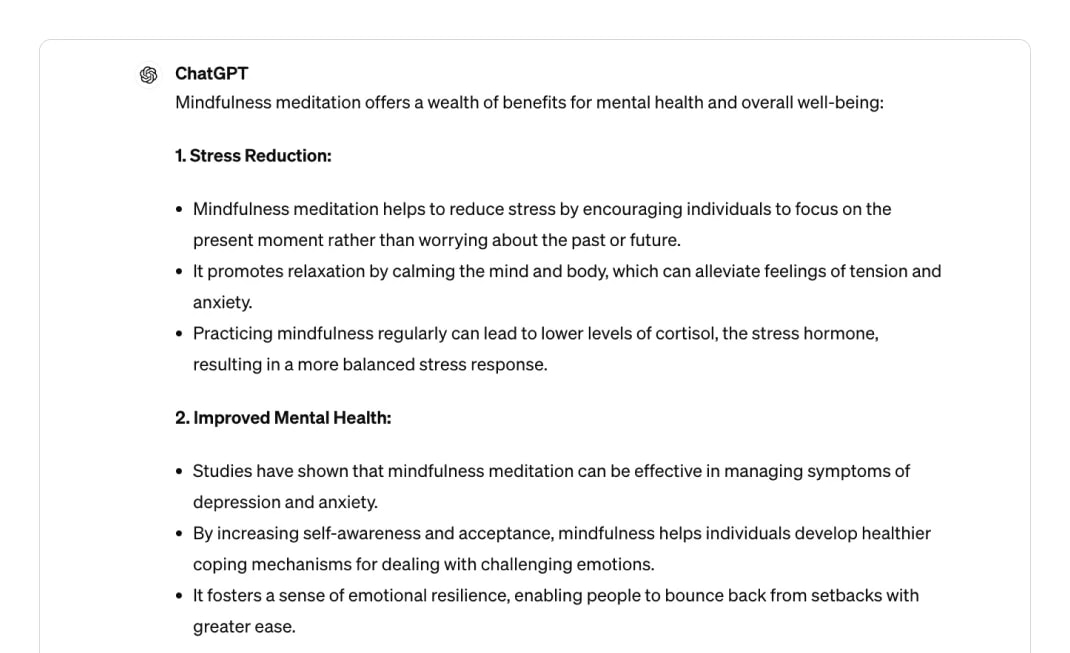
✅It provides a clear structure for the desired answer.
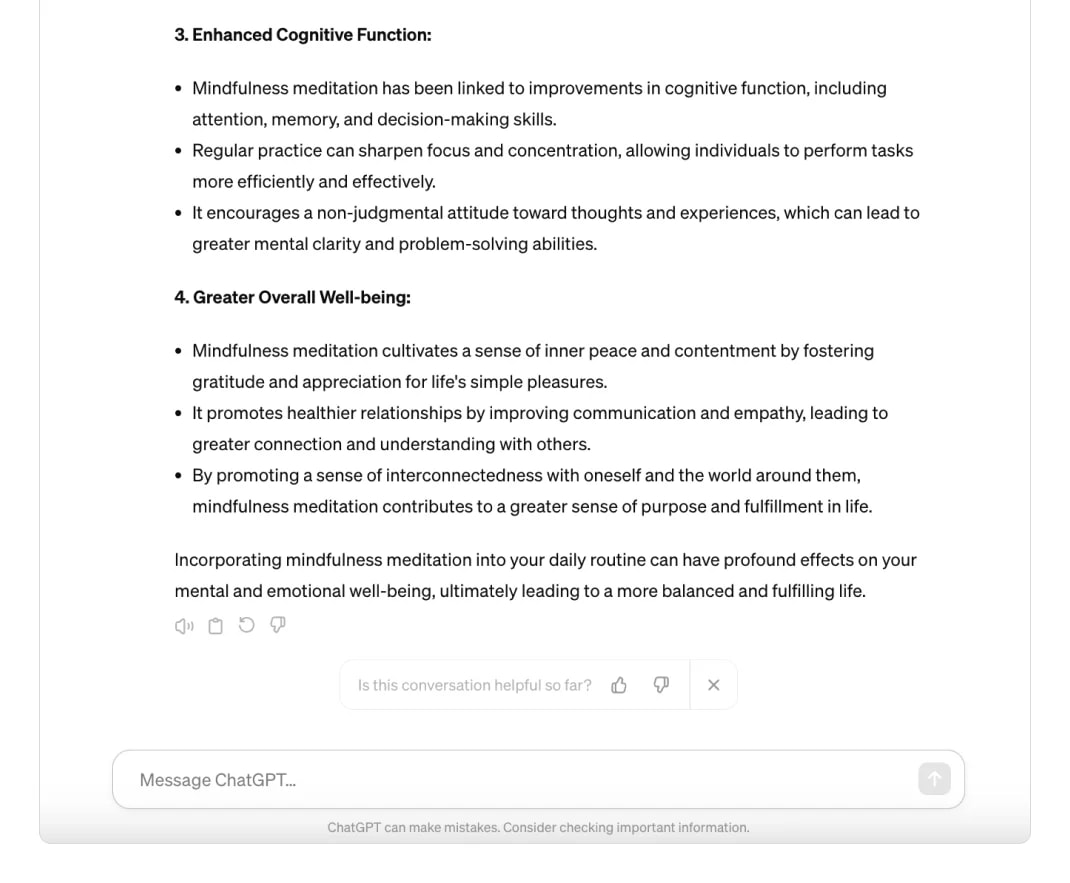
4. Set a Writing Point of View
Give ChatGPT a role, like a character in a story, to guide its responses. This role can represent:
- an identity
- point of view
- or profession
By assigning a role, you instruct a tool to create responses based on the expertise or perspective associated with that position.
For example, if you assign it the position of a travel blogger, it will provide responses that capture the style expected of this profession.
💡Example of how to set a viewpoint:
“Take on the role of a travel blogger sharing tips on solo travel safety. Write a 150-word blog post discussing essential precautions, packing essentials, and navigating unfamiliar destinations confidently.”
Why is this prompt good?
✅It has assigned role of a travel blogger to ChatGPT, specifying the task of sharing tips on solo travel safety.

✅The prompt provides specific guidelines for the content of the response.
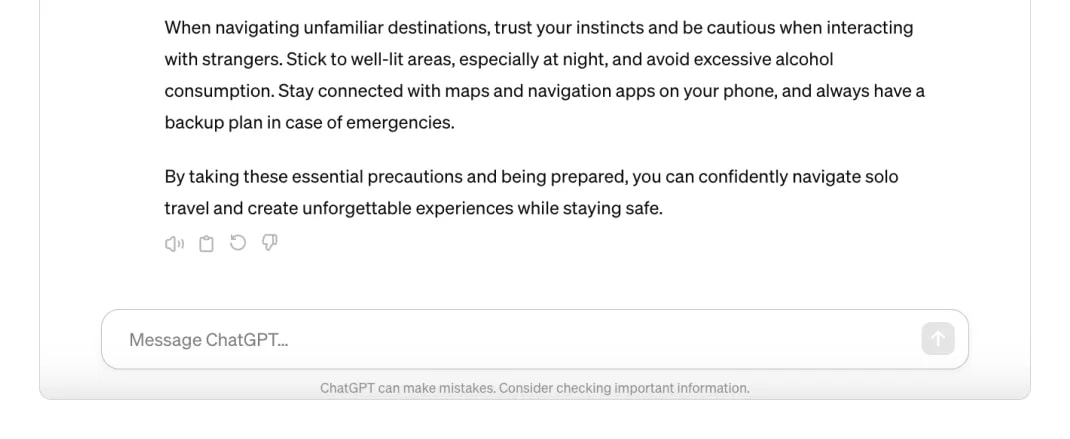
5. Be Descriptive
When you're asking ChatGPT to rewrite or improve text, it's crucial to be descriptive about what you want. Specify:
- tone
- coherence
- clarity
- engagement level
💡Example of how to write to a prompt descriptively:
”Editing AI-generated content involves several key steps. First, review for coherence and relevance, ensuring the text aligns with the intended message.
Next, refine grammar and style, correcting any errors or awkward phrasing. Finally, verify facts and adjust the tone to enhance readability.’’ - rewrite this text, make it casual, engaging, cohesive, easy to digest, use simple language, and write in a friendly tone”
Why is this prompt good?
✅It clearly communicates the desired style and tone in which the text should be rewritten.
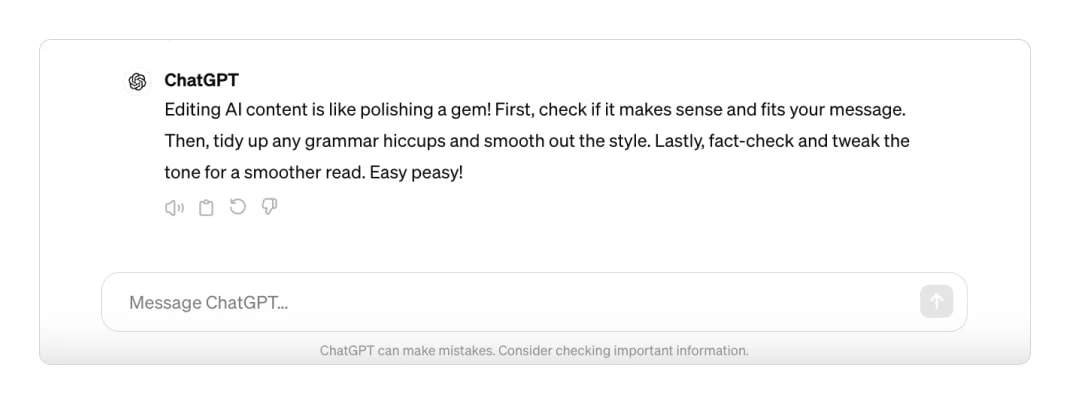
6. Craft Rules
List everything you need. For example, you can request:
- result displayed in a table with two columns
- written in simple sentences or
- described in a way that even a seven-year-old can understand
Specify the required word count for each sentence, as well as any relevant objects or topics.
💡Example of how to set rules:
“Please provide a list of sharks. Organize the information in a two-column table, with the shark’s names in the left column and their habitats in the right column.
Keep each sentence simple, with no more than 10 words per sentence. Make sure to mention at least five sharks and describe their habitats accurately.”
Why is this prompt good?
✅Because it clearly explains what should be in each column.
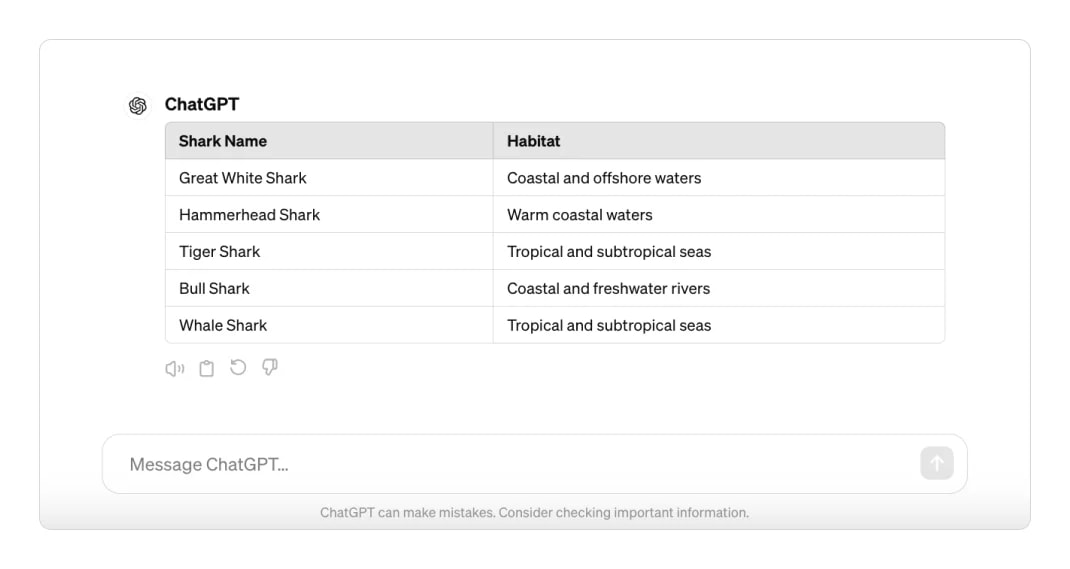
✅It precisely determines the number of words in a sentence and how many types of sharks to list.
7. Set Restrictions
Just as you have to list what you want and set the rules, you must also list the things you absolutely do not want to find in the output.
For example, set restrictions on the use of:
- slang
- passive voice
- or idioms
💡Example of how to set the restriction:
"Compose a 250-word persuasive essay advocating for the importance of recycling in reducing environmental pollution. Avoid using slang, passive voice, idioms, contractions, and exclamation marks in your writing."
Why is this prompt good?
✅The prompt works well because it has a list of what ChatGPT can't use, making it clear and straightforward.
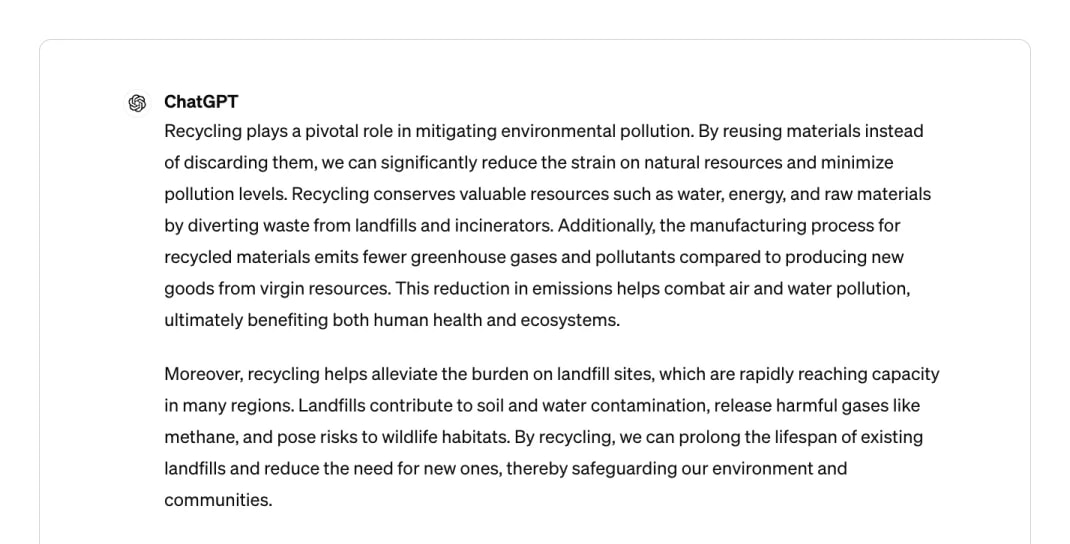
✅It also has an instruction related to the number of words.
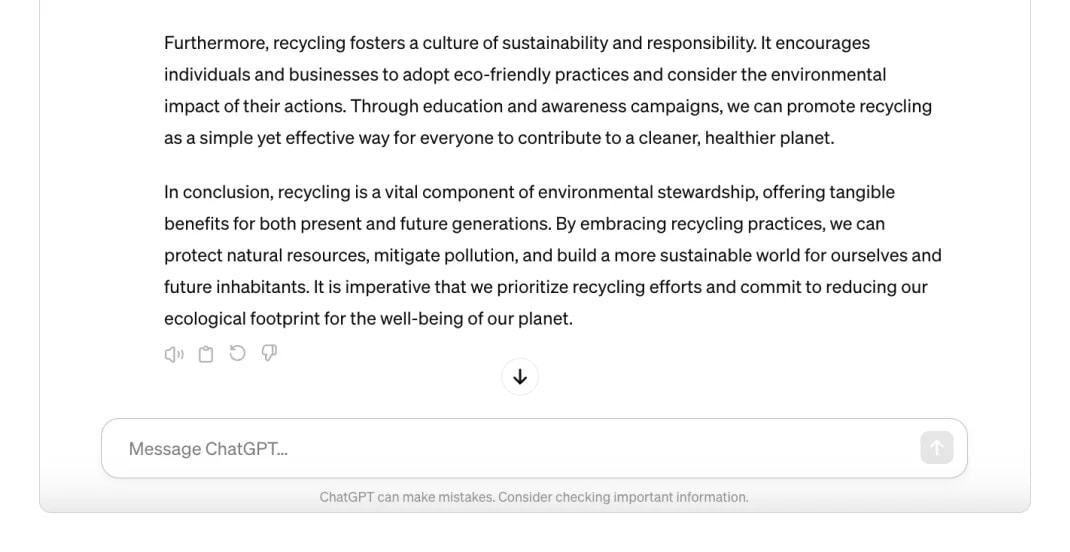
8. Ask Follow-Up Questions
Follow-up questions are useful because they allow you to "navigate" ChatGPT in the direction you choose. You can also ask for additional clarification if necessary, which helps keep the conversation on topic and ensures you have the information you need.
💡Example of how to ask follow-up questions:
“Thanks for the summary! Could you also include the study's findings regarding the correlation between excessive social media usage and feelings of loneliness among young adults?”
Why is this prompt good?
✅Because it contains a clear question for additional information on a specific aspect of the topic.
✅Starting with positive feedback lets ChatGPT know what it's doing right and helps it understand what doesn't need adjustment.
9. Ask Open-Ended Questions
ChatGPT is a conversational AI tool and that's why you should write prompts as if you were talking to someone.
Don’t ask "Yes" or "No" questions. Instead, rewrite them so that they are open-ended.
You can achieve that by starting with "Why..", "How...", "What.." etc.
💡Example of open-ended question #1:
“Why do you think creativity is important for problem-solving?”
💡Example of open-ended question #2:
“How can we encourage sustainable practices in our daily lives?”
💡Example of open-ended question #3:
“What are some effective ways to improve mental health and well-being?”
Why are these prompts good?
✅They are good because when you ask an open-ended question, you will get a more detailed answer. Depending on what you use ChatGPT for, you can get an idea of what you should write about or what you should research further.
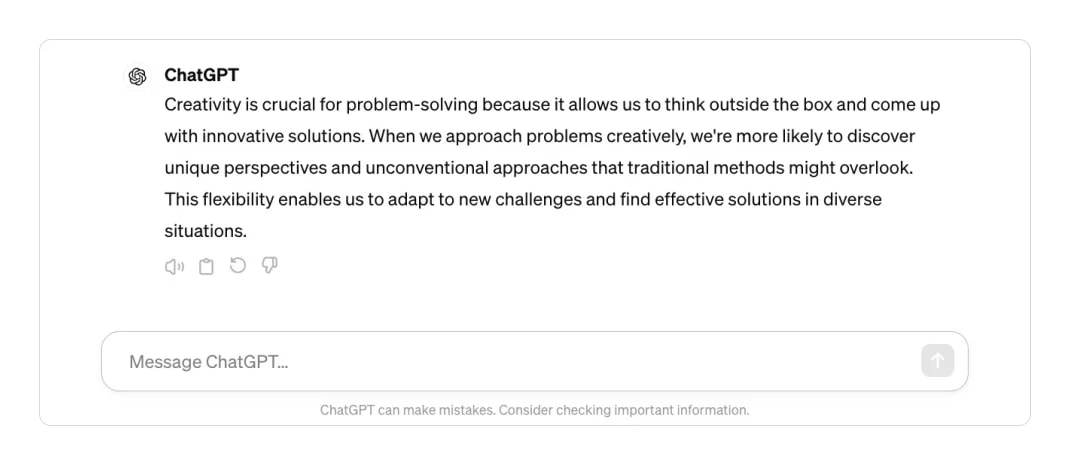
To Wrap Up
As someone who has been using ChatGPT for a long time and didn't always know how to actually use it, I can say that this list of tips can help you write better prompts.
Trust me, crafting them properly is key to getting ChatGPT to do what you need.
And when you learn how to do it, remember that you shouldn’t blindly rely on it.
Always add your own touch and check the text it gave you.
But, even though it is truly helpful, ChatGPT is not the only tool that can help you with everyday tasks.
TextCortex is one of them, and Zeno Chat can serve you just like ChatGPT 👇
Zeno Chat - A Viable Alternative
Textcortex is an AI tool and is designed to help you improve your writing with the help of AI intelligence. It has many useful features, but Zeno Chat is definitely the star of this tool.
Here's why:
⚡It lets you customize your assistant and create a digital persona that writes in your tone and style
⚡It can enhance every sentence you type in, and therefore improve the quality of your prompts
⚡You can upload files and get information from them with relevant queries
⚡You can talk to Zeno and it will transcribe your words into text
⚡It allows you to generate images
⚡Also, you can search the web, news, Twitter, Youtube, Reddit, patents, and many more sources with the Web Search function
⚡It can translate entire PDF files for you
⚡Create tables
Whether you have a question, researching a topic, or simply improving content, TextCortex can assist you!
How to Start Using It?
1. Add the extension ✔️
2. Click the extensions icon in your browser ✔️
3. Pin the extension to your browser ✔️
4. Enable or disable the extension whenever you want ✔️
Add the extension today and streamline your everyday tasks with Zeno!

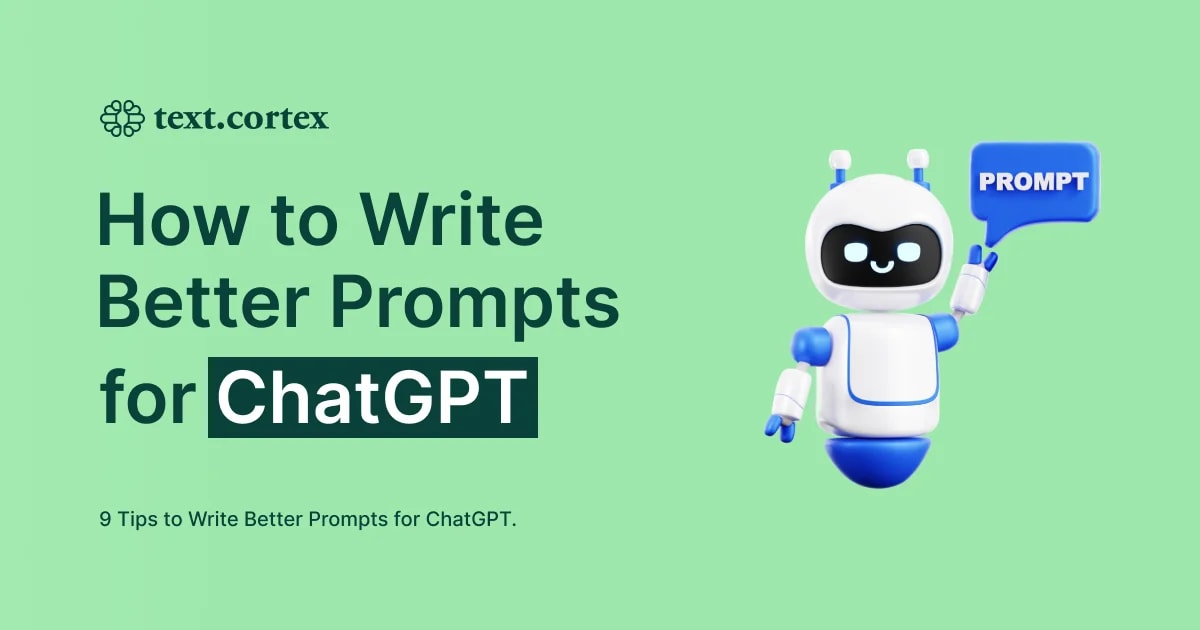


%20(24).png)
